The Perfect Chipper
Capacity is key to finding the right machine and ensuring it runs for years to come
Este es nuestro intento de convertir las historias en audio español usando Inteligencia Artificial. Aún así le recomendamos que reconfirme ciertas palabras clave y temas. ArborTIMES no garantiza ni se responsabiliza de la conversión del inglés al español de los relatos.
.

A reliable wood chipper is a must-have for any tree care company looking to quickly process a tree, take on more work, and scale a business.
Reducing logs and brush into wood chips may seem a little unnecessary when a tree needs to be hauled off anyway, but taking the time to chip a tree onsite pays off in several ways. As an after-market product, wood chips can be sold in a variety of forms, such as landscape mulch, livestock bedding, biochar, and wood pellets.
“Chippers are much more economical,” says Jason Morey, marketing manager at Bandit Industries, Inc. “Wood chippers reduce tree weight down into a more manageable size. So instead of having to deal with large pieces of debris, you can process it into smaller pieces and haul those chips somewhere else for disposal or sale.”
Louie Weaver, vice president of sales and products at DYNA Products, agrees.
“Having a wood chipper makes tree care companies more efficient, gives them more options, and makes them more successful overall.”
Buying a wood chipper can be a hefty investment, so knowing what to look for when buying one is essential.
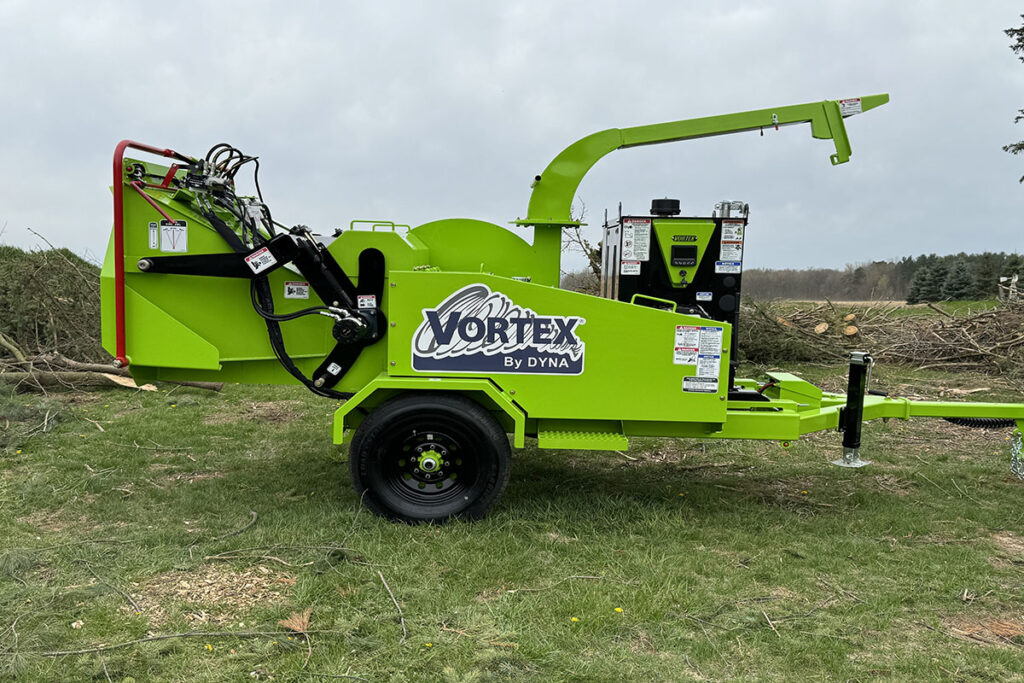
Understanding Wood Chippers
Most chippers are hand-fed machines that are mounted on wheels and typically pulled behind a chip truck, which catches the wood chips and transports them offsite. Stationary whole-tree chippers are available, but these are usually used in commercial mulch or land clearing operations.
All wood chippers feature a safety collar, feed hopper, knives or another cutting mechanism, and a chute where the wood chips exit the chipper. While electric wood chippers are catching on, most models have an internal combustion engine fueled by either gas or diesel.
Though similar in many ways, chippers are not the same as shredders, which are typically smaller machines armed with duller knives that can break down plant material into finer pieces, like compost and mulch. Some manufacturers do make “chipper-shredder” combo units that have the capability to do both jobs.
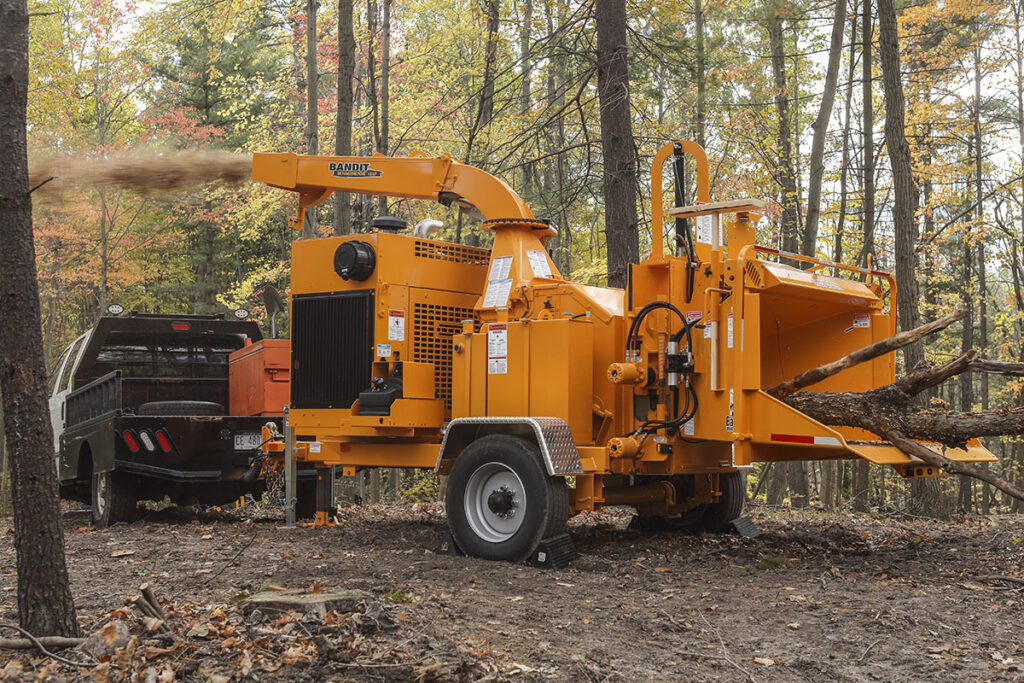
Wood chippers are typically one of two styles: disc or drum. The first disc chipper was invented in Germany in 1884. Eventually drum chippers gained in popularity and were known as “chuck and duck” chippers because of how fast material was dropped into the drum.
Users report that disc-style chippers tend to produce more uniform chips and throw the chips more efficiently at a greater velocity than drum chippers. But disc chippers may also struggle with larger logs and pieces of brush.
Drum chippers’ increased torque and lower revolutions per minute (RPMs) make the machines adept at handling larger logs and bushier branches. Operators of drum chippers also remark how versatile the technology is, allowing them to tackle bigger jobs. Today, many manufacturers combine the two technologies to create premier chipping machines.
Vortex chippers use the best of both technologies in a joint drum-disc system, according to David Daymon, products business development manager for DYNA, which joined with Vortex in 2023.
“Ours is technically a drum chipper with an attached propeller or fan,” Daymon says. “Typically, disc chippers don’t cut as efficiently as drum chippers, and drum chippers struggle with throwing chips. Our drum chipper has a propeller fan attached, so it throws really well, like a disc chipper.”
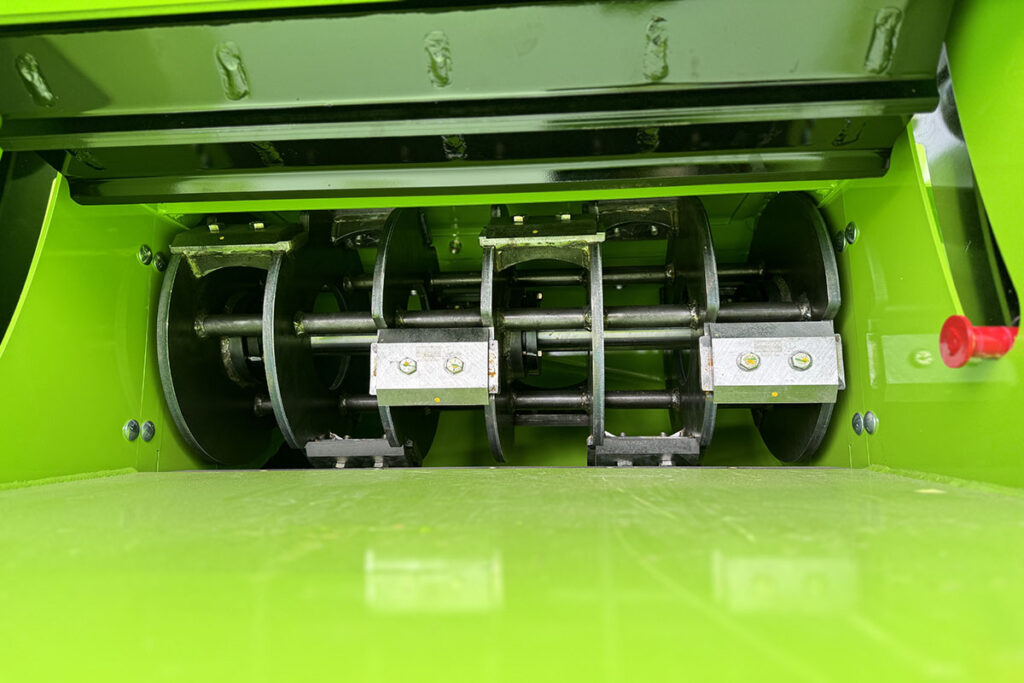
The Right Chipper
While there are many things to consider when investing in a wood chipper, capacity, safety, and regional fit are among the most important.
Capacity
According to Lou Hicks, regional sales manager for Morbark, LLC, the first question he asks potential customers is how much wood they expect to process. From this answer, Hicks can direct a customer to the appropriately sized machine, even if it’s a little bigger or smaller than their expectations.
The question of capacity is important, and experts agree that the perfect chipper can handle most of the wood a tree care company expects to feed it daily, weekly, and yearly.
“If you can fit 80 to 90 percent of the material you expect to process through it, it’s a good fit,” Weaver says.

Safety
Thanks to evolving technology, wood chippers are being built to be safer than ever. For instance, machines are often painted with an eye-catching finish. Not only does this help with brand recognition, but the improved visibility doubles as a safety feature.
Daymon identified several features that DYNA has put in place to ensure the ultimate safety of Vortex chippers.
“We have safety bump bars that stop the feed wheel from turning, a forward-reverse bar on the unit, and a longer infeed, so it takes longer for accidents to happen,” Daymon explains.
Bandit chippers go above and beyond Occupational Safety and Health Administration standards, Morey says, and its newest chipper line is the safest yet.
In addition to an operator toolbar, last chance table, and two cables that will reverse the machine in emergencies, Bandit chippers also contain a rope shear device designed to cut any rope that gets caught in the drum.
Regional fit
While many manufacturers have global dealer networks, Hicks recommends purchasing from a local dealer, since different regions have different trees. Hardwoods, softwoods, and other types of trees react differently under the knife, and factors like temperature and moisture can also affect the chipping process.
“You have to understand your area,” Hicks says. “Local dealers have a working knowledge of the wood you can expect to process in your region.”
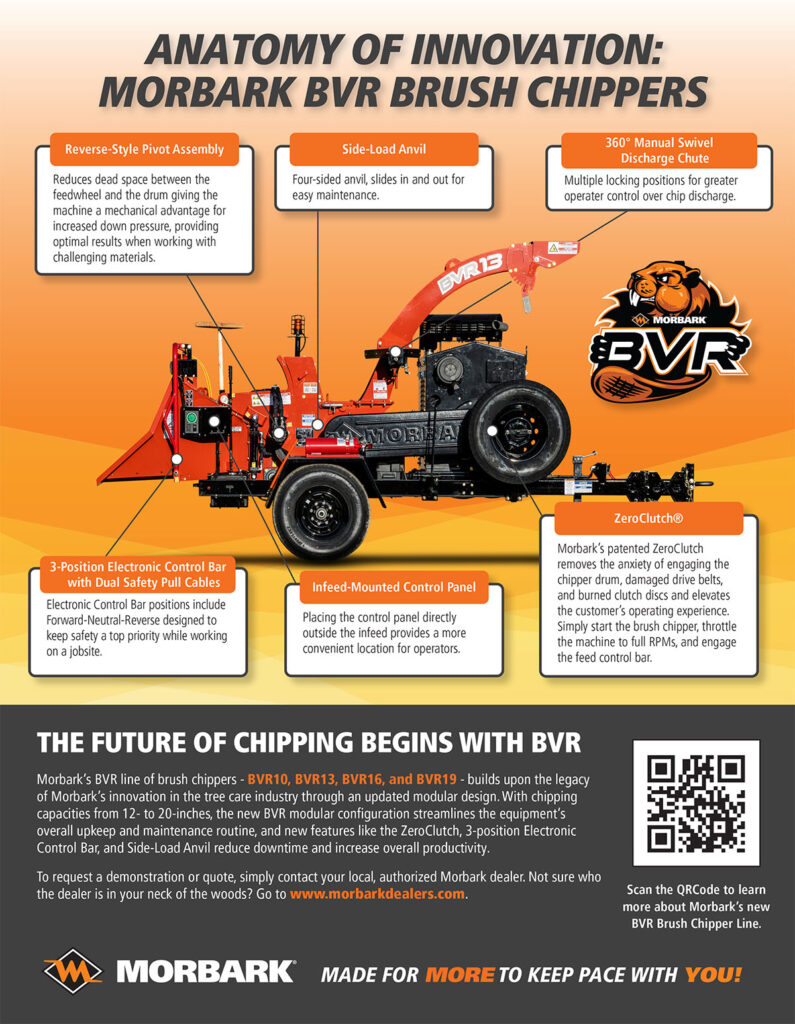
Protect Your Investment
Like any piece of equipment, wood chippers need to be treated with care and be provided with regular maintenance. The following practices will ensure any chipper enjoys a long life.
Don’t feed at capacity
It’s a common misconception that a wood chipper’s ideal diet should be as large as the size of the infeed. Hicks explains that brush chippers should only be fed to their maximum capacity a fraction of the time.
“There’s the mentality in the industry that ‘if it fits, it chips,’ but that’s not the mentality to have,” Hicks says. “In general, you want to feed your chipper wood that is only two-thirds of the opening size. Managing your chipper this way will extend the machine’s longevity and performance.”
Daymon notes that a chipper’s lifespan varies depending on how often you use it and what size logs and brush you feed it.
“If you give a 12-inch chipper a steady diet of 12-inch logs, it won’t last as long as if you’d been feeding it a diet of primarily eight-inch logs,” Daymon says. “A 12-inch chipper isn’t intended to have a steady diet of 12-inch pieces.”
Feeding a chipper at its maximum capacity will only shorten its lifespan, while feeding it just under its capacity will ensure your chipper lasts for years to come.
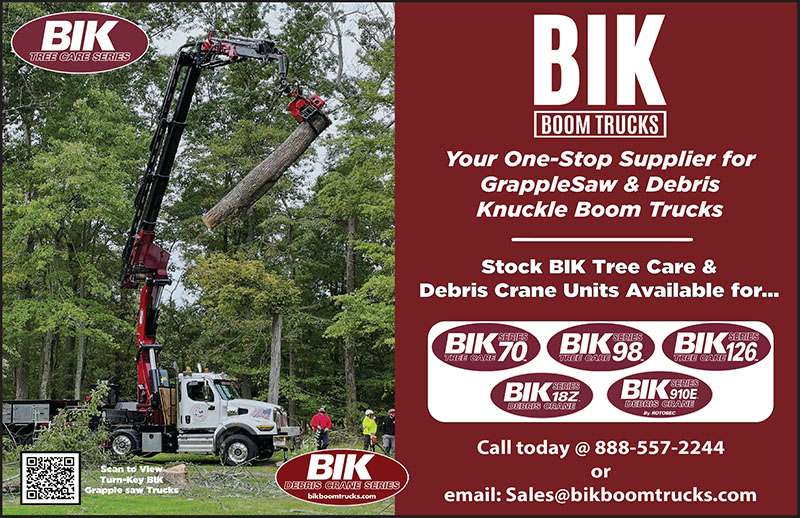
Routine maintenance
With proper maintenance and care, Daymon expects chippers to have a lifespan of up to 15 years. He adds that the flipside is also true; abused or neglected equipment may last fewer than five years.
Wood chipper maintenance includes making sure its knives and anvil are sharp and lubricated, the belt and clutch are running properly, and filters are changed frequently.
“Protect your investment by keeping your equipment maintenance up to date,” Daymon says.
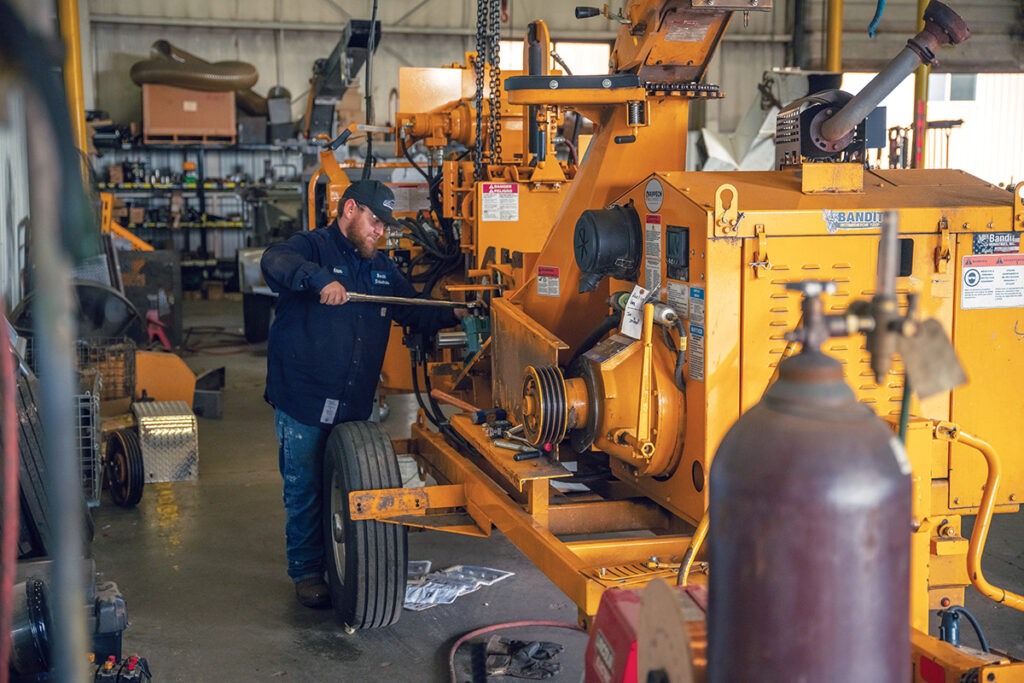
Safety concerns
With recent news headlines, there’s no shortage of reminders that these machines are among the deadliest pieces of equipment in the industry. Manufacturers point to education as paramount in reducing wood chipper accidents.
“We have owner-operator manuals, parts manuals, and service manuals for our products,” Daymon says. “We’re building an array of online and in-person training resources, so our staff and customers are educated on the benefits and safety mechanisms of our products.”
Hicks equates safe wood chipper operation with proper maintenance and suggests that operators take up a daily ritual that includes inspecting for cracks in knives and properly adjusting belts and clutches. Seemingly trivial tasks need to become routine, manufacturers warn, since all parts of a chipper are connected, and an imbalance in any one part of the system could be dangerous for the whole.
Tree care workers minimize risk and maximize safety with wood chippers by being properly trained, exercising caution, and using common sense.
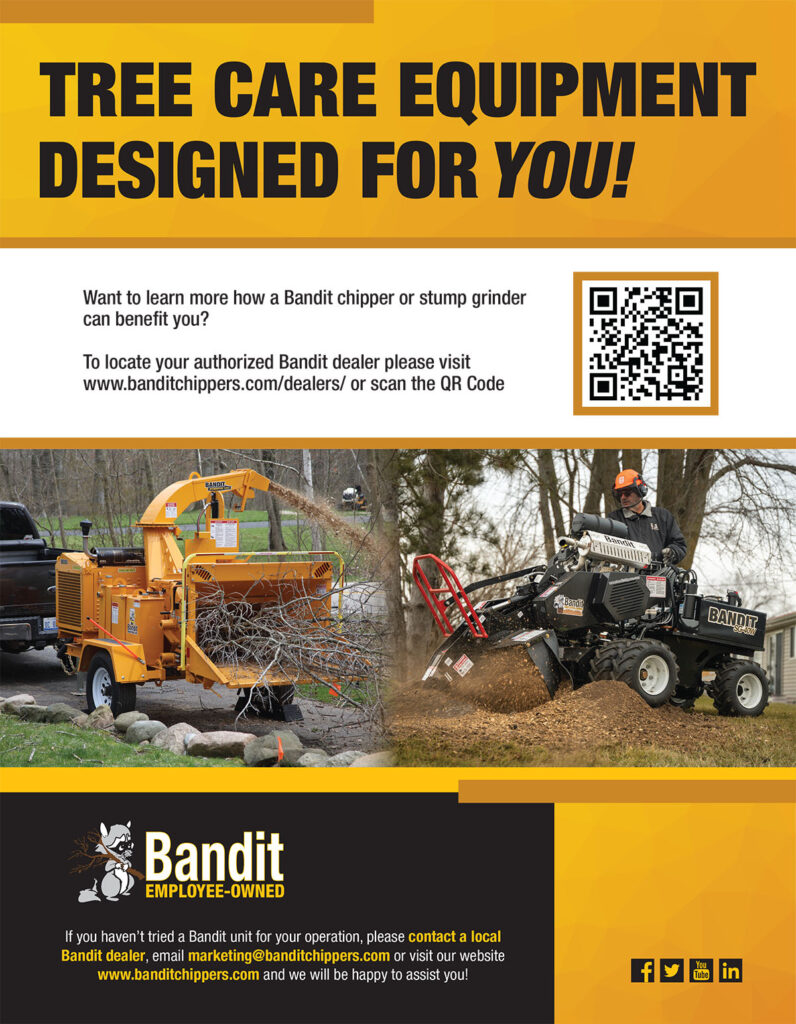
Conclusion
Chippers and chip trucks are valuable forestry tools. Although these powerful machines require routine maintenance to keep them operable and safe, the return on your investment will quickly become evident in time saved and jobs accomplished.
When shopping for a chipper, keep an open mind and an honest inventory of the size and type of wood you process. A knowledgeable representative will guide you to find the perfect chipper for your business, setting you up for safety and success.
Partnering With Chip Trucks
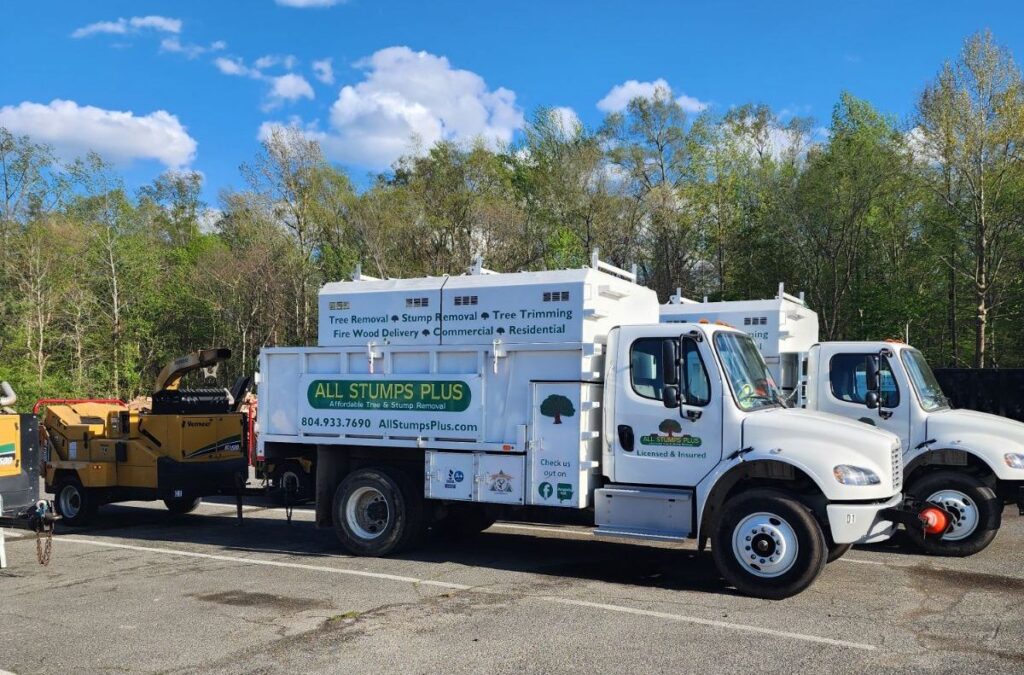
While chip trucks aren’t strictly essential, experts agree that they make tree care jobs immeasurably easier, especially when chips need to be transported offsite.
“A chip truck and a chipper go hand in hand,” says John Dean, inside sales specialist at Custom Truck One Source, which sells new and used chipper trucks. “If you don’t have a chip truck, you’ll be limited in what you can do.”
ONE CREW, TWO JOBS
Combined with a rear-mounted bucket truck, chip trucks can add value by allowing one crew to tackle multiple jobs at once.
The bucket truck can get a head start taking down trees and move on to another job while the chipper and chip truck stay behind to complete clean-up duties. This would allow crews to manage more jobs, increase productivity, and take on more work.
CHIP TRUCK MUST-HAVES
Dean recommends keeping the same chassis as other trucks when adding a chip truck to your fleet.
“It’s convenient to work with the same chassis, so you have the same service and maintenance,” he says. “And your drivers are already familiar with that chassis, whether that’s Freightliner, International, or Peterbilt.”
While horsepower and torque are typically top-of-mind for most customers, Dean believes transmission may be even more important when it comes to a chip truck.
“Transmission actually regulates what you can tow,” Dean says, adding that a vehicle’s transmission must be equipped to handle its combination weight rating. This includes the chassis, the contents of the chip truck, and the chipper being pulled behind.
Additional considerations include volume (how large your chip loads will be), whether the truck will need to hold other equipment and tools, and how many people it will need to carry.
MAXIMIZING THE LIFESPAN
Just like a wood chipper, routine maintenance keeps a chip truck on the road and at the job site.
Dean stresses the importance of cleaning a chip truck after every use. The moisture in wood chips could seep into any imperfections in the metal and cause the box to start deteriorating.
In addition to regular cleaning, Dean encourages chip truck owners to get in the habit of conducting daily inspections and preventative maintenance.


